In 1915, the Ottoman Empire started the systematic massacre and extermination of Armenian men, women and children. The genocide was carried out during and after World War I and implemented in two phases: the wholesale killing of the able-bodied male population through massacre and subjection of army conscripts to forced labor, followed by the deportation of women, children, the elderly and the ailing on death marches to the Syrian desert.
Driven forward by military escorts, the deportees were deprived of food and water and subjected to periodic robbery, rape, and massacre. The total number of people killed as a result has been estimated at 1.5 million. After 23 countries recognized the genocide , Turkey still denies its occurrence.
1915
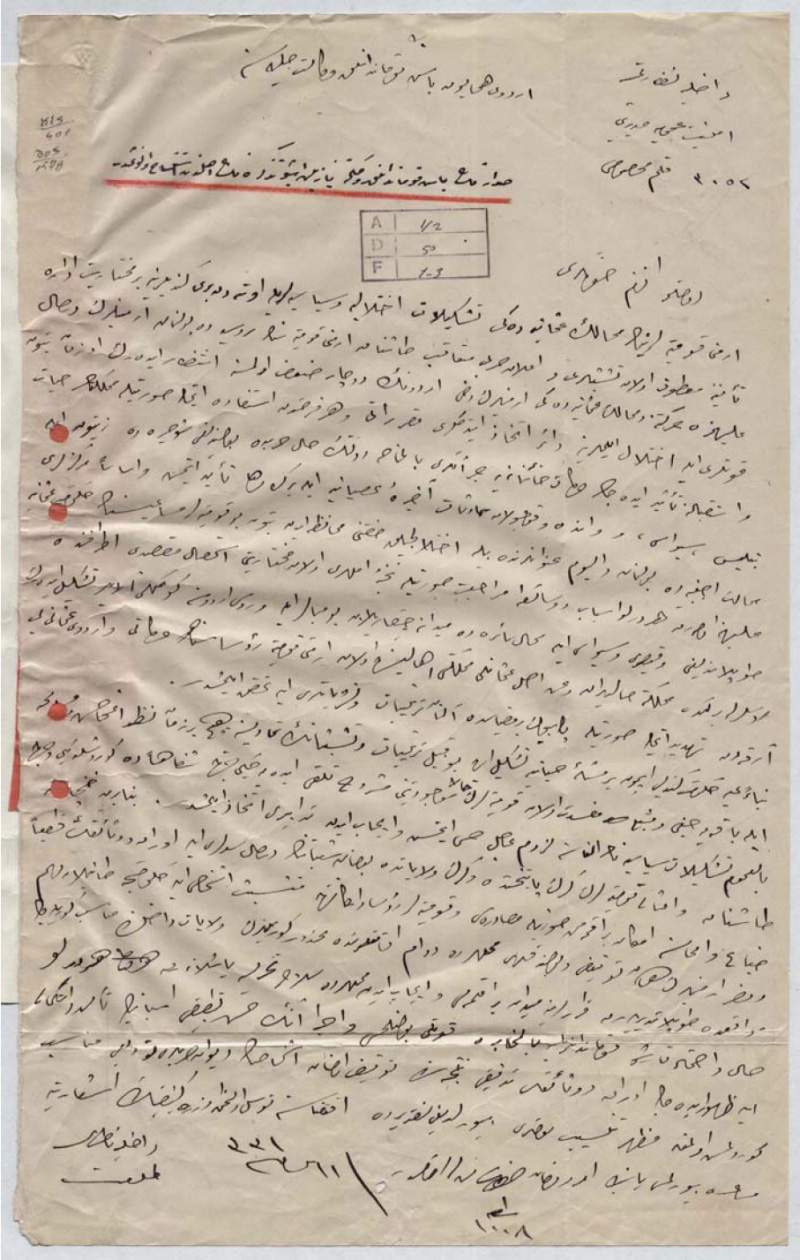
April 24, 1915, Ottoman Empire’s minister of the Interior- Mehmed Talat Bey’s order to deport Armenian notables from the Ottoman Capital in 1915
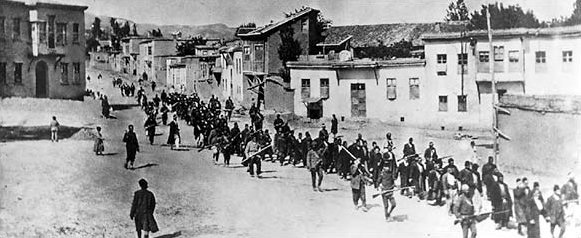
April 1915, Kharpert (Harput), Ottoman Empire – Armed Ottoman soldiers marching Armenian civilians to a prison in Mezireh
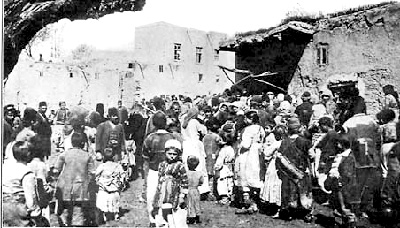
1915, Van Province, Ottoman Empire – Armenian refugees during the siege of Van. According to Ambassador Henry Morgenthau, “These people were torn from their homes almost without warning, and started marching toward the desert. Thousands of children and women as well as men died on these forced journeys, not only from hunger and exposure, but also from the inhuman cruelty of their guards.”
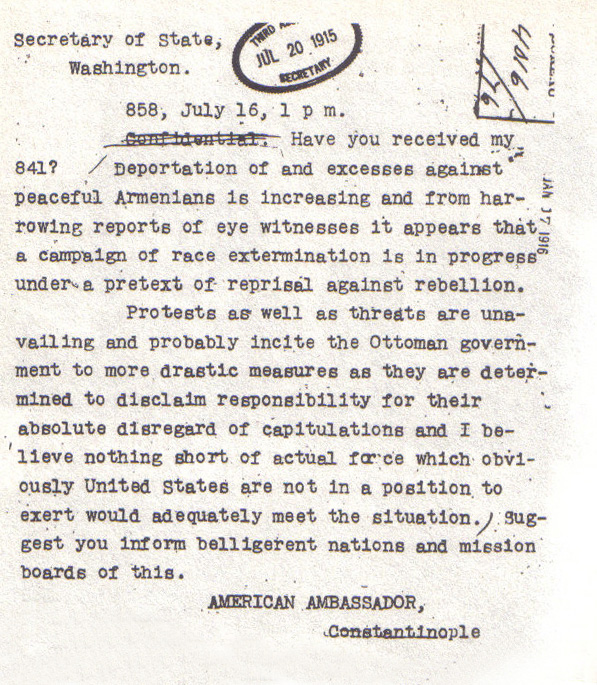
July 16, 1915, official telegram sent by United States ambassador, Henry Morgenthau, to the Ottoman Empire from 1913-1916 – In this telegram he describes the process as a “race extermination” regarding what was taking place to the Armenians.
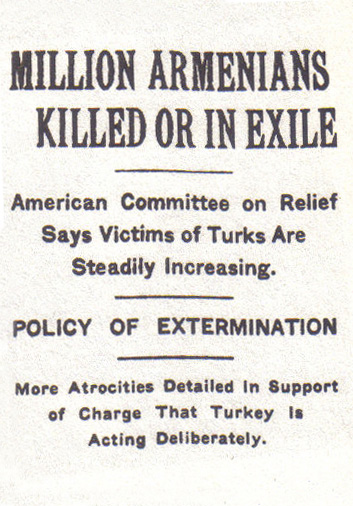
December 15, 1915, New York times – Article published in the New York Times discussing “the policy of extermination.”
1916
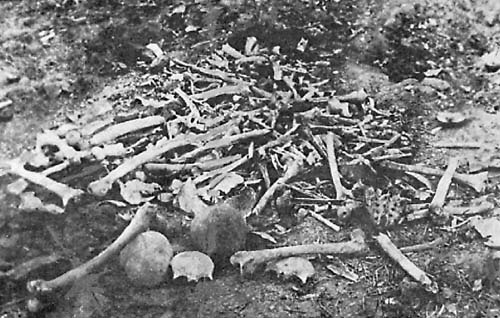
1916, Aleppo Square – Armenian doctors hanged in Aleppo Square.
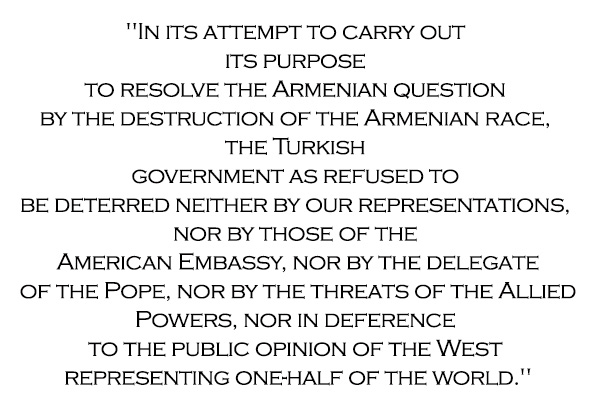
Paul Wolff- Metternich, German Ambassador to the Ottoman Empire, 1915-1916 – Unlike most of his companions in the German consulate, Metternich openly condemned the Turkish and German governments for collaborating and conspiring against the Armenians. He was particularly bothered by the German media which he accused of encouraging the ongoing measures against Armenians. He was quoted as saying, “Their successes are due to our work, to our officers, to our cannons and to our money. Without our help, the inflated frog is bound to collapse”. Metternich was among the few German diplomats in the Ottoman Empire who openly held Talat Pasha responsible for the massacres, accusing him of being “the soul of the Armenian persecutions.”
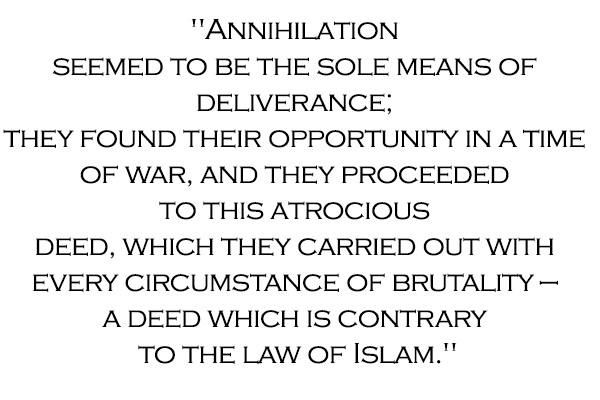
1916, Diyarbakir – This is a first hand account of the Armenian Genocide written by a Syrian who had been a Turkish official for three and a half years. His accounts tell of the worst of humanity, and also of the noblest. The noble include families who courageously support each other in the face of death, and Turks who refuse to follow orders to kill, knowing that they shall be executed themselves for their defiance.
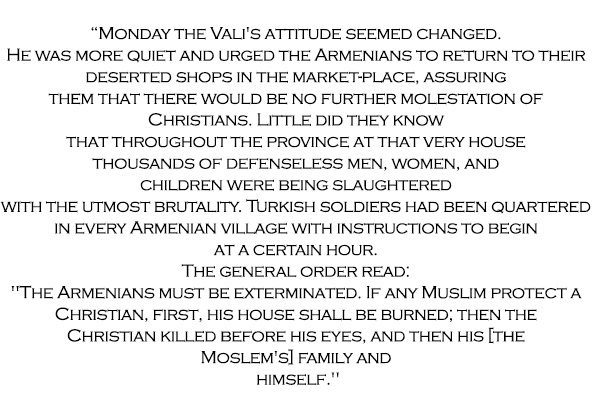 A physician and a Christian missionary,Clarence Ussher’s accounts of the Armenian Genocide is considered one of the most detailed in the English language. In 1917, Ussher published a memoir about his experiences in Van, entitled An American Physician in Turkey: A Narrative of Adventures in Peace and War.
A physician and a Christian missionary,Clarence Ussher’s accounts of the Armenian Genocide is considered one of the most detailed in the English language. In 1917, Ussher published a memoir about his experiences in Van, entitled An American Physician in Turkey: A Narrative of Adventures in Peace and War.1918
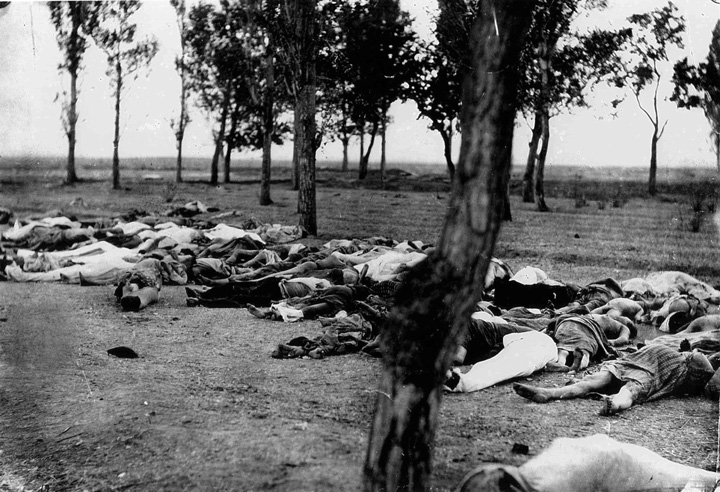
1918, Armenian Provinces in the Ottoman Empire – This image depicts Armenians killed during the Armenian Genocide as described by Ambassador Henry Morgenthau. He explained that such scenes were common all over the Armenian provinces in several forms including massacres, starvation and exhaustion. He added that “the Turkish policy was that of extermination under the guise of deportation.”
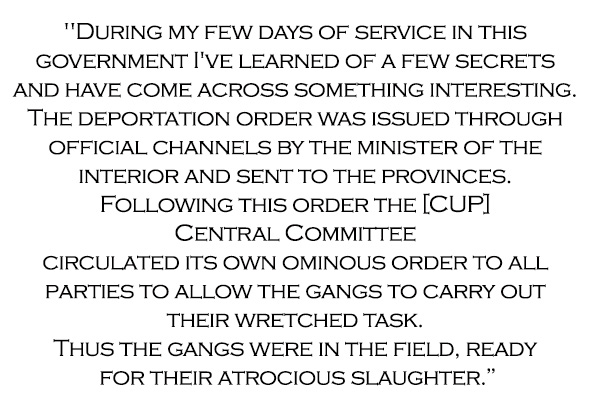
Reshid Akif Pasha, Vali of Sivas -Council of State- Cabinet Minister in the Ottoman government, is known for providing important testimony during a session of the Ottoman parliament on November 21, 1918. The speech had outlined the process in which official statements made use of vague terminology when ordering deportation only to be clarified by special orders ordering “massacres” sent directly from the Committee of Union and Progress headquarters and oftentimes the residence of Talat Pasha himself.
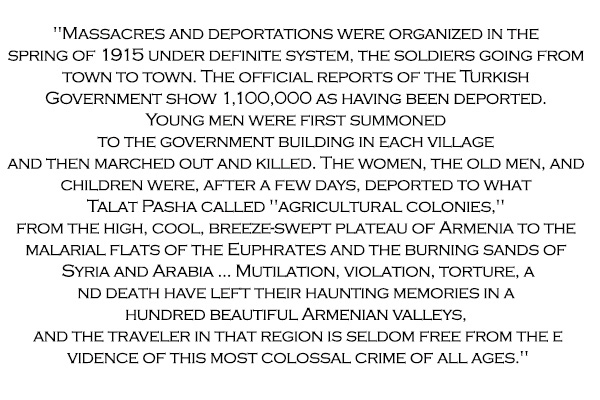
James Harbord, Lieutenant General in the U.S. Army, was sent to the Caucasus to lead an American Military Mission to Armenia in order to provide detailed information about the country to the United States. Upon returning to the United States, Harbord wrote the Conditions in the Near East: Report of the American Military Mission to Armenia, which was a summary of the expedition that provided various details of the mission. The report includes maps, statistics, and a historical analyses of the country and its population. In addition to such details, Harbord collected evidence and information regarding the massacres of Armenians and was an eyewitness to them.
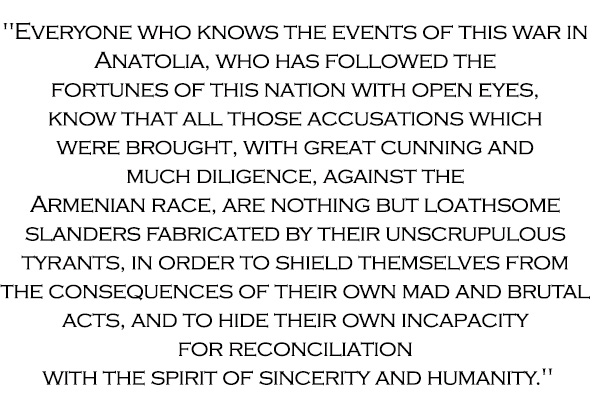
Armin Wegner was a German soldier and medic in World War I, a prolific author, and a human rights activist. Stationed in the Ottoman Empire during World War I, Wegner was a witness to the Armenian Genocide and the photographs he took documenting the plight of the Armenians today “comprises the core of witness images of the Genocide.” Wegner protested against the atrocities perpetrated by the Ottoman government against the Armenian people in an open letter, published in the Berliner Tageblatt, submitted to American President Woodrow Wilson at the peace conference of 1919. The letter made a case for the creation of an independent Armenian state.
Also in 1919, Wegner published Der Weg Ohne Heimkehr (The Road of No Return), a collection of letters he had written during what he deemed the “martyrdom” (Martyrium) of the Anatolian Armenians.
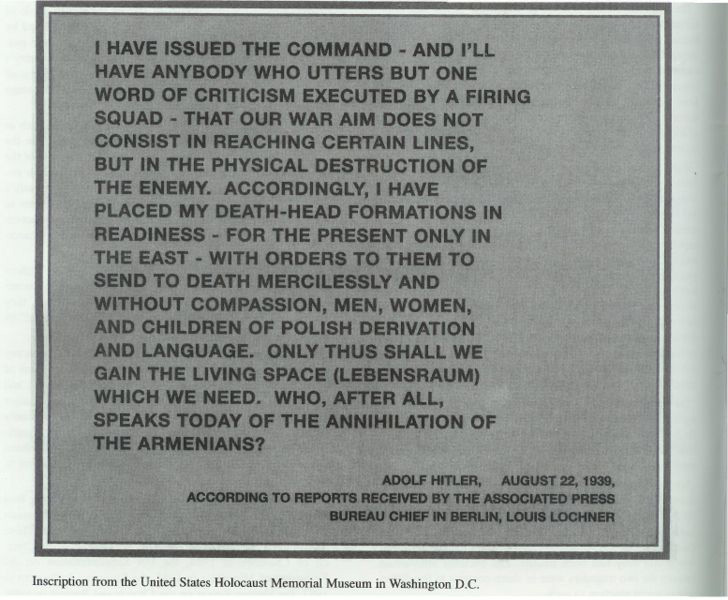
August 22, 1939, Adolf Hitler’s Quote Regarding the Armenian Genocide

